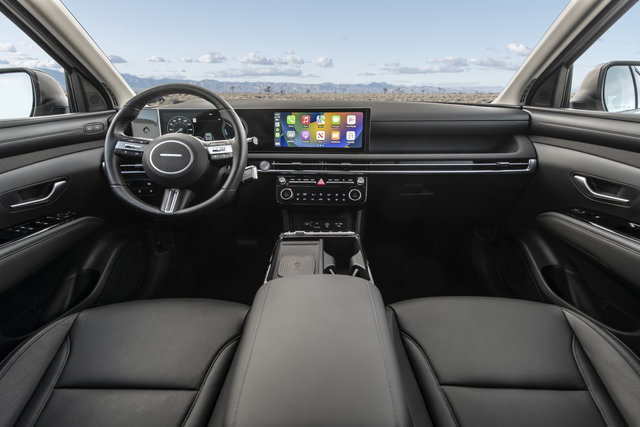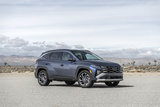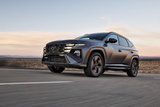Hyundai has established itself as a leader in automotive innovation, continually pushing the boundaries of what is possible in vehicle safety, performance, and efficiency. In 2025, Hyundai continues this tradition with a range of impressive technologies that enhance the driving experience and set new standards in the automotive industry. From the advanced Superstructure platform to the cutting-edge SmartSense safety systems and the efficient SmartStream engines, Hyundai’s latest innovations demonstrate its commitment to creating smarter, safer, and more connected vehicles. Here’s a closer look at some of Hyundai's most remarkable technologies available in 2025.
1- Superstructure: The Foundation of Strength and Safety
At the core of Hyundai’s vehicles is the Superstructure, a highly advanced platform that utilizes high-strength steel to provide exceptional rigidity and safety. This architecture serves as the backbone of many Hyundai models, enhancing crash protection, improving vehicle dynamics, and delivering a more comfortable ride.
The Superstructure platform is engineered to absorb impact energy more efficiently during collisions, minimizing damage to the cabin and protecting occupants. It also improves the handling and stability of the vehicle, thanks to its enhanced structural integrity, which reduces vibrations and road noise, making every drive smoother and quieter.
2- Hyundai SmartSense: Advanced Safety and Driver Assistance
Hyundai’s SmartSense suite of safety technologies represents the pinnacle of advanced driver assistance systems, designed to make every journey safer and less stressful. In 2025, SmartSense features even more sophisticated sensors, cameras, and software that work together to monitor the environment and assist the driver in real time.
Forward Collision-Avoidance Assist (FCA): This system uses radar and camera technology to detect vehicles, pedestrians, and cyclists ahead. If a potential collision is detected, FCA will warn the driver and apply the brakes automatically if necessary to prevent an accident.
Blind-Spot Collision-Avoidance Assist (BCA): BCA helps prevent collisions during lane changes by monitoring blind spots and intervening with corrective braking if the system detects a vehicle in the path of a potential lane change.
Lane Keeping Assist (LKA) and Lane Following Assist (LFA): LKA gently steers the vehicle back into the lane if it senses unintentional drifting, while LFA keeps the vehicle centered in its lane on highways, making long drives safer and more comfortable.
Smart Cruise Control (SCC) with Stop & Go: SCC maintains a set distance from the vehicle ahead, automatically adjusting speed and even bringing the vehicle to a complete stop when necessary, perfect for navigating heavy traffic.
3- SmartStream Engines: Efficiency Meets Performance
Hyundai’s SmartStream engines are at the forefront of modern engine technology, blending advanced fuel-saving measures with responsive performance. Designed with cutting-edge engineering techniques, SmartStream powertrains aim to maximize fuel efficiency while minimizing emissions, without sacrificing power.
Gasoline Direct Injection (GDI) and Continuously Variable Valve Duration (CVVD): These technologies improve combustion efficiency and reduce emissions, offering a perfect balance between power and fuel economy. CVVD allows for the precise control of valve duration, optimizing engine performance across a wide range of driving conditions.
Hybrid and Plug-In Hybrid Variants: Hyundai’s SmartStream line includes hybrid and plug-in hybrid options that combine gasoline engines with electric motors for outstanding fuel economy and reduced emissions. Advanced regenerative braking systems help recharge the battery while driving, further enhancing efficiency.
Turbocharging and Downsizing: SmartStream engines also employ turbocharging and engine downsizing techniques, which provide ample power when needed while maintaining excellent fuel efficiency. The result is a smoother, more responsive driving experience with fewer trips to the gas station.
4- Connected Car Technologies: Infotainment and Connectivity
Hyundai’s commitment to innovation extends beyond performance and safety; the brand also excels in connectivity and infotainment technologies that keep drivers connected on the go. The 2025 models feature enhanced digital interfaces that blend convenience, entertainment, and safety in one cohesive package.
Bluelink® Connected Car Services: Hyundai’s Bluelink® system provides a seamless connection between the vehicle and the driver’s smartphone, enabling remote start, climate control, vehicle tracking, and emergency assistance, all from the comfort of a mobile app.
Advanced Infotainment Systems: Large touchscreens with crisp graphics provide easy access to navigation, media, and vehicle settings. Enhanced voice recognition allows drivers to control functions without taking their hands off the wheel, making for a safer, more intuitive driving experience.
Wireless Apple CarPlay and Android Auto: These systems are now fully wireless, allowing drivers to easily connect their devices for navigation, calls, and media streaming without the hassle of cables.
Conclusion
Hyundai’s 2025 vehicle lineup showcases a remarkable blend of advanced technology, safety, and performance. From the robust Superstructure platform to the intelligent SmartSense systems and the efficient SmartStream engines, Hyundai continues to push the envelope of automotive innovation. As these technologies become more integrated into everyday driving, Hyundai is setting the stage for a future where vehicles are smarter, safer, and more connected than ever before.






